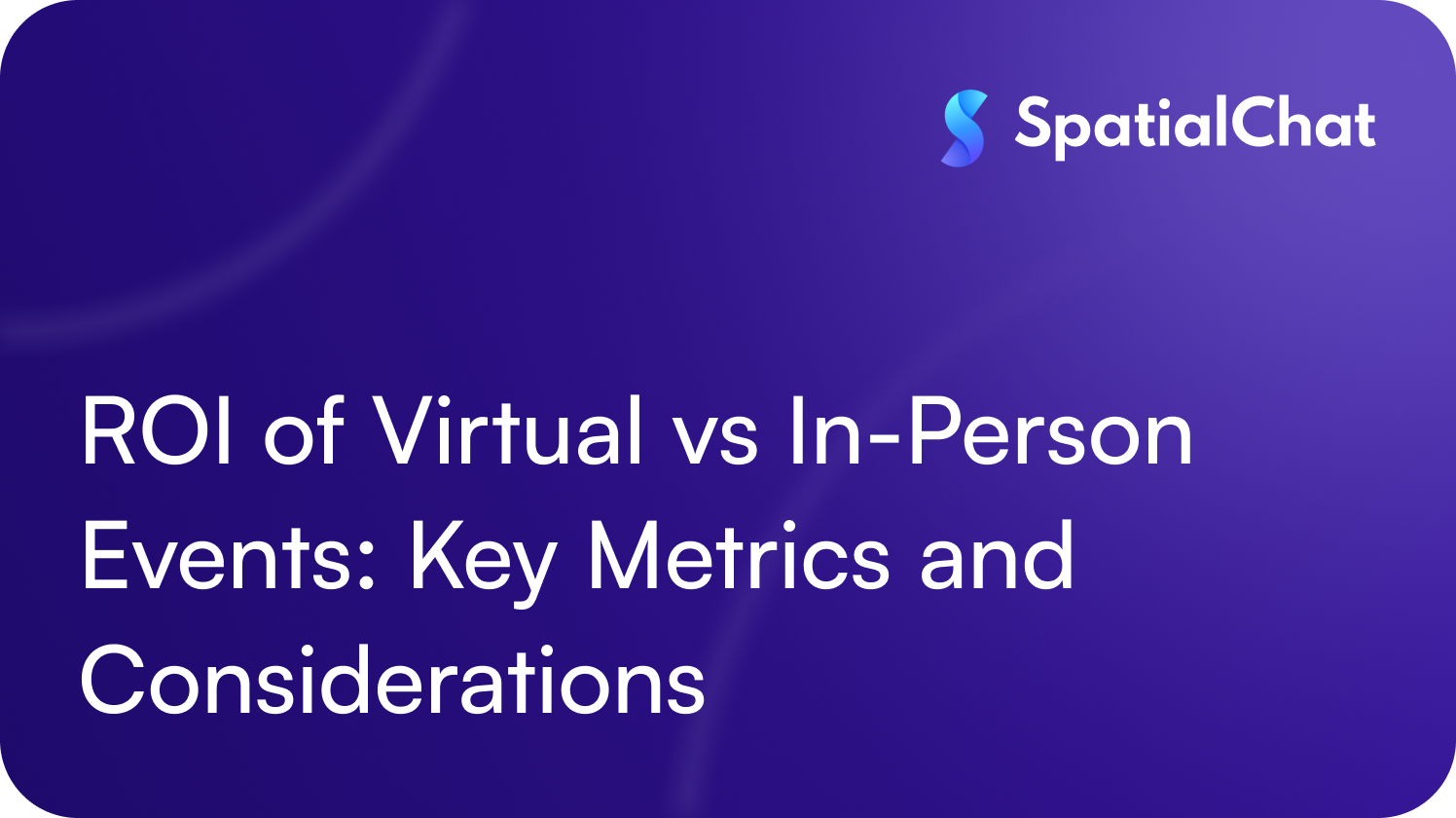Choosing between virtual and in-person events isn’t just about venue or platform. It’s a business decision driven by measurable return. Below, we’ll compare costs, reach, lead economics, engagement quality, sponsor value, and measurement tactics so you can determine which format best aligns with the KPIs for your event.
1) Cost: Hard Dollars and True Savings
The most obvious difference lies in cost. Virtual events eliminate expenses like venue hire, catering, travel, and on-site staffing. On average, they cost 60–90% less than comparable in-person events, which translates into immediate budget efficiency and the ability to host more frequent programs.
However, “true cost” also includes staff hours for production, platform licensing, and paid promotion. High-production virtual conferences can still be expensive per attendee, so always model your budget at the line-item level rather than assuming virtual automatically means cheap.
2) Reach vs. Networking Depth
Virtual equals scale; in-person equals depth.
Virtual events expand geographic reach and lower attendance friction, increasing registration volumes and enabling global participation. Many organizers report significantly higher attendance online. In contrast, the spontaneous, trust-building nature of face-to-face networking remains unmatched for deepening relationships with partners, sponsors, or key accounts.
If your objective is brand awareness or top-of-funnel growth, virtual formats often win. For high-value relationship building or strategic partnerships, in-person events still lead.
3) Lead Generation and Cost per Lead (CPL)
One of the strongest ROI arguments for virtual events is cost per lead. Studies show webinars and virtual events often deliver leads for around $70–$75 per lead, whereas in-person trade shows and conferences can cost several hundred dollars per lead after factoring in travel, booth design, and logistics.
That gap makes virtual formats highly efficient for scalable lead capture. However, in-person leads may convert at higher rates and generate larger average deal sizes. When assessing ROI, compare both CPL and customer lifetime value (LTV) for a true picture.
4) Engagement Metrics and Conversion Velocity
Virtual events provide granular digital analytics by default — attendance duration, session drop-off, content downloads, chat transcripts, polls, and clicks. These signals enable faster, personalized follow-ups and stronger pipeline attribution. Integrating your event platform with your CRM can directly tie engagement data to revenue outcomes.
In-person events require more effort to digitize engagement (badge scans, lead forms, post-event surveys), and attribution can lag. Still, when face-to-face interactions drive large deals, the longer conversion time can yield exceptional ROI per account.
5) Sponsor and Exhibitor Value
Sponsors increasingly value the precise metrics available in virtual events, like impressions, booth visits, and content downloads make ROI transparent. These measurable outcomes often justify sponsorship renewals, even at lower price points.
That said, in-person events still command premium sponsorship fees because they offer concentrated buyer attention and the opportunity for hands-on demonstrations. For organizations that rely heavily on sponsorship revenue, hybrid events can combine measurable digital exposure with the personal connections that only in-person interactions can deliver.
6) Time Horizon: Short-Term ROI vs. Long-Term Brand Value
Virtual events often show faster returns because they’re less expensive and provide immediate analytics. Many organizations report positive ROI from virtual formats within months.
However, in-person experiences build intangible brand equity — trust, loyalty, and reputation — that compounds over time. The most strategic event programs measure ROI across two horizons:
- Short-term ROI through cost efficiency, lead generation, and pipeline velocity.
- Long-term ROI through customer retention, media impact, and strategic relationships.
7) When Hybrid Is the Smart Default
Hybrid events combine the best of both worlds: the scale and data of virtual events, with the human connection of in-person gatherings. They typically cost more than pure virtual events but less than hosting two separate experiences.
Hybrid models allow tiered participation, like on-site VIPs and global online audiences, thus maximizing both sponsor reach and attendee flexibility. For many B2B organizations, this balance delivers the highest ROI across multiple objectives.
8) Measurement Framework: KPIs That Matter
To evaluate ROI objectively, focus on metrics that align with your business goals:
- Cost per Lead (CPL): Total spend divided by qualified leads.
- Lead Quality / Conversion Rate: How efficiently each channel converts MQLs to SQLs.
- Pipeline and Revenue Influenced: Dollar value of deals attributed to the event within a defined period.
- Engagement Depth: Average viewing time, downloads, and meeting requests.
- Sponsor ROI: Clicks, impressions, leads, and brand exposure metrics.
- Long-Term Metrics: Customer lifetime value (LTV), retention rates, and brand sentiment.
Integrate tracking through UTM parameters, CRM tagging, and event analytics dashboards to ensure consistency across formats.
9) Practical Recommendations
- Define your objective first: If the goal is reach and efficiency, choose virtual. If it’s relationship building, in-person may be more impactful.
- Model different scenarios: Build ROI models that compare CPL × conversion rate × LTV across formats.
- Pilot hybrid models: Combine physical and virtual audiences to test where engagement and conversion are strongest.
- Invest in data and analytics: The format that measures better performs better, so ensure you can track every engagement point.
Virtual events often deliver higher measurable ROI because they scale reach efficiently and shorten the path to measurable leads. In contrast, in-person events deliver deeper relationships and brand experiences that can drive larger deals, but at a higher cost. Recent industry research suggests that virtual events see, on average, a 26% higher ROI than physical events, though the “right” choice ultimately depends on goals such as lead volume, deal size, and brand positioning.
There’s no universal winner in the virtual vs in-person event ROI debate. Virtual events typically outperform on efficiency, reach, and measurable lead generation, often delivering a higher immediate ROI. In-person events excel in building trust, nurturing key relationships, and driving long-term loyalty.
The best strategy is to choose the format that matches your goals and resources, or combine both through hybrid experiences that maximize returns across the funnel. Measure consistently, analyze outcomes, and let the data guide your next event investment.
